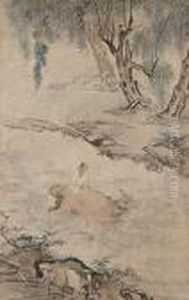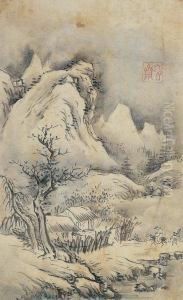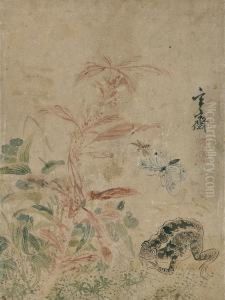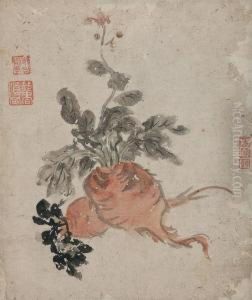Sim Sajeong Paintings
Sim Sajeong, also known as Sim Sa-jeong, was a prominent Korean painter of the mid-Joseon period, which is often regarded as the golden age of Korean painting. He was born in 1707 in the Korean kingdom and passed away in 1769. Sim Sajeong is particularly well-known for his mastery in the literati painting tradition, which values the expression of the artist's scholarly knowledge and personal character over the mere technical skill of depiction.
Sim Sajeong was born into a time when the literati culture was flourishing in Korea. As a literati painter, he was influenced by the ideals of Confucianism and the aesthetic principles that originated from Chinese scholarly painting. Despite these influences, Sim managed to forge a unique style that distinguished his work from his contemporaries and Chinese influences. He is renowned for his delicate brushwork, use of ink wash, and the lyrical quality of his landscapes and other subjects, which often included bamboo, one of the 'Four Gentlemen' in East Asian art symbolizing virtue and resilience.
In addition to landscapes, Sim Sajeong was adept at painting a wide range of subjects including flowers, birds, and other natural elements with a style that conveyed his deep contemplation and connection with nature. His works were infused with a sense of tranquility and harmony, reflecting the Confucian ideal of inner balance and peace.
During his lifetime, Sim Sajeong's talent was recognized by his contemporaries, and he was commissioned to produce works for various patrons, including the royal court. However, much like many artists of the era, he was also known to paint for himself and his friends within the scholarly community.
Despite the passing of centuries, Sim Sajeong's work continues to be celebrated in Korea and beyond for its elegance, simplicity, and the embodiment of the literati spirit. His paintings are considered national treasures and are often studied for their historical and cultural significance as well as their artistic value. Unfortunately, only a limited number of his works have survived to the present day, but those that remain are cherished examples of 18th-century Korean art.



